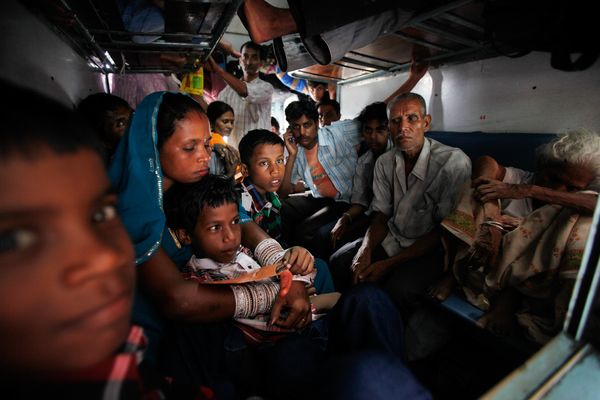
Image: New Delhi train passengers sit stranded in a darkened train idled by the massive power outage that swept across India on Tuesday.
Marianne Lavelle, Jeff Smith and Rebecca Byerly - July 31st, 2012 - news.nationalgeographic.com
In one of the world's worst power blackouts ever, more than 600 million people across India lost electricity Tuesday, the second massive grid failure in as many days, raising questions whether the government's failure to modernize and bolster its energy delivery system had finally left the nation at the breaking point.
Rail service was halted, streets were clogged at intersections with darkened traffic lights, and people sweltered without air conditioning in temperatures above 90°F (32°C), as authorities worked to restore power and pinpoint the cause of the problem. The outage that began Monday lasted 15 hours, and only shortly after service was restored, at 1 p.m. Tuesday, a far larger system collapse swept across the nation's northern and eastern grids.
Recent Comments